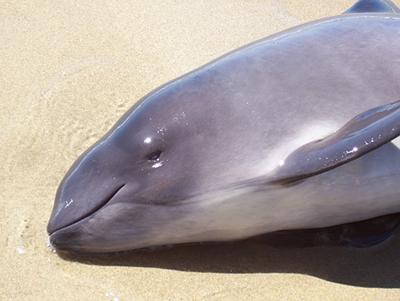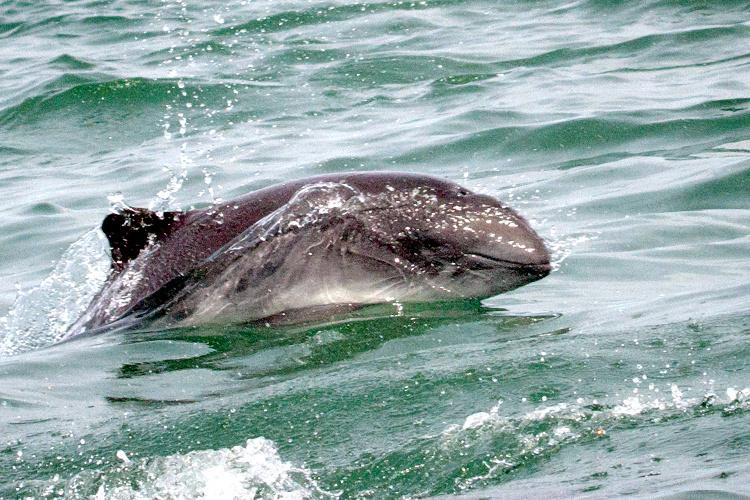Low-
Moderate
The harbor porpoise has increased in abundance in the Washington’s Salish Sea during the past 20 to 25 years. It is now considered common in this area and may be at historically high population levels.
Two stocks are known to occur in Washington: Northern Oregon-Washington Coast Stock and Washington Inland Waters Stock. A variety of factors lead to the near extirpation of harbor porpoise from Puget Sound. The species’ interactions with fisheries and pollution are two threats that were a known problem in the inner marine waters during the period of harbor porpoise decline during the 1970s through 1990s. Changes have been made in recent decades to reduce the impact of these threats, allowing the Washington Inland Waters Stock of harbor porpoise to increase to its current level.
Marine mammals are protected under the Marine Mammal Protection Act. To report a dead, injured or stranded marine mammal, please call the National Oceanic and Atmospheric Administration (NOAA) West Coast Region Stranding Network hotline: 1-866-767-6114.
Description and Range
Physical description
Harbor porpoises have a dark gray, rounded head and a dark gray topside which gradually turns lighter gray along the front half of the body. The dorsal fin is medium-sized relative to the body and triangular. The throat and belly are white. Their length ranges from about 5 to 5 ½ feet and their weight is about 135 to 170 pounds. Males are slightly smaller than females.
Check out the Cascadia Research Collective Puget Sound Dolphin and Porpoise Species Identification Video.
Ecology and life history
Harbor porpoise are mostly found in coastal waters, including bays and estuaries. Harbor porpoises are relatively solitary, often seen alone or in groups of a few individuals. They keep a low profile in the water and do not splash when traveling or surfacing.
The diet of the harbor porpoise is primarily schooling fish, such as herring and mackerel, but can also include squid and octopus.
Females become sexually mature at about 4 years of age. Breeding mostly occurs in summer, and gestation lasts about 11 months. Calves are mostly born between May and July.
The life span of this species is about 24 years.
Geographic range
Harbor porpoises are found in northern temperate, subarctic, and arctic coastal and offshore waters. Harbor porpoise in the eastern North Pacific Ocean are distributed almost continuously along the west coast of the United States and Canada. They are considered non-migratory and relatively resident to specific areas with National Marine Fisheries Service recognizing six different management stocks along the U.S. West Coast.
In Washington, harbor porpoise were a common year-round resident in the Puget Sound in the 1940s. By the 1970s, however, they had disappeared from the Sound, and their numbers were greatly reduced in the Straits of Georgia and Juan de Fuca, and around the San Juan Islands. In the early 2000s, harbor porpoise made a comeback to Puget Sound. The results of WDFW aerial surveys, over a period of two decades, documented both increasing trends followed by stabilization of the harbor porpoise in the waters of the Strait of Juan de Fuca and Puget Sound, as well as their expansion into the previously abandoned waters of the Puget Sound and the waters of the Eastern Strait of Georgia.
For maps of range-wide distribution and conservation status, check out NatureServe Explorer and the International Union for Conservation of Nature Red List.
Climate vulnerability
Sensitivity to climate change
Low-
Moderate
Very limited information is available regarding the sensitivity of the Pacific harbor porpoise to climate change, particularly for Washington populations. Their overall sensitivity is likely to be influenced by prey availability (e.g., small forage fish like herring, zooplankton). Porpoises prefer areas with high prey density; thus, any changes in prey density, which could be prompted by climate factors like increasing ocean temperature or declines in pH, could limit prey availability for porpoises. Studies in other regions have shown that porpoises tend to be generalists and can switch between different types of prey depending on abundance and interannual fluctuations; the ability to switch prey may decrease the overall sensitivity of harbor porpoises.
Exposure to climate change
Moderate
- Increased ocean temperatures
- Declines in pH
Conservation
Conservation Threats and Actions Needed
- Overharvesting of biological resources
- Threat: Entanglement in fisheries gear (netting, pots, and traps) is a cause of mortality and injury both in inner Washington waters and off the U.S. west coast.
- Action Needed: Determine ongoing sources of bycatch and manage those fisheries to reduce bycatch.
See the Climate vulnerability section above for detailed information about the threats posed by climate change to this species.
Our Conservation Efforts
Surveys and Research
Harbor porpoise were considered the most common cetacean in the inner marine waters of Washington State including Puget Sound in the 1940s, the most common cetacean in Washington state-wide, and seen year around in the Puget Sound. Research and observations from the 1970s through the 1990s, however, revealed harbor porpoise were virtually absent from Puget Sound. Reports of harbor porpoise within the Puget Sound began in the early 2000s, with regular sightings in southern Puget Sound starting in 2008. The return was monitored by National Marine Fisheries Service, WDFW, Cascadia Research Collective, and the Marine Mammal Stranding Network.

Except for 2007, since 1994, WDFW has conducted annual winter aerial marine bird surveys that cover all of the Washington inner marine waters from southern Puget Sound to the Canadian border, out to the west entrance of the Strait of Juan de Fuca. All marine mammal observations were also consistently recorded; this almost 30-year dataset provides a record of increasing harbor porpoise numbers in the northern portion of the survey area in the early years, followed by their expansion into the waters of the Puget Sound.
Check out the Resources section to learn more about the disappearance and return of the harbor porpoise to Puget Sound.
Resources
WDFW Publications
- Evenson, J.R., D. Anderson, B.L. Murphie, T.A. Cyra, and J. Calambokidis. 2016. Disappearance and Return of Harbor Porpoise to Puget Sound: 20 Year Pattern Revealed from Winter Aerial Surveys (2016) Technical Report. Washington Department of Fish and Wildlife, Wildlife Program and Cascadia Research Collective, Olympia, WA.
